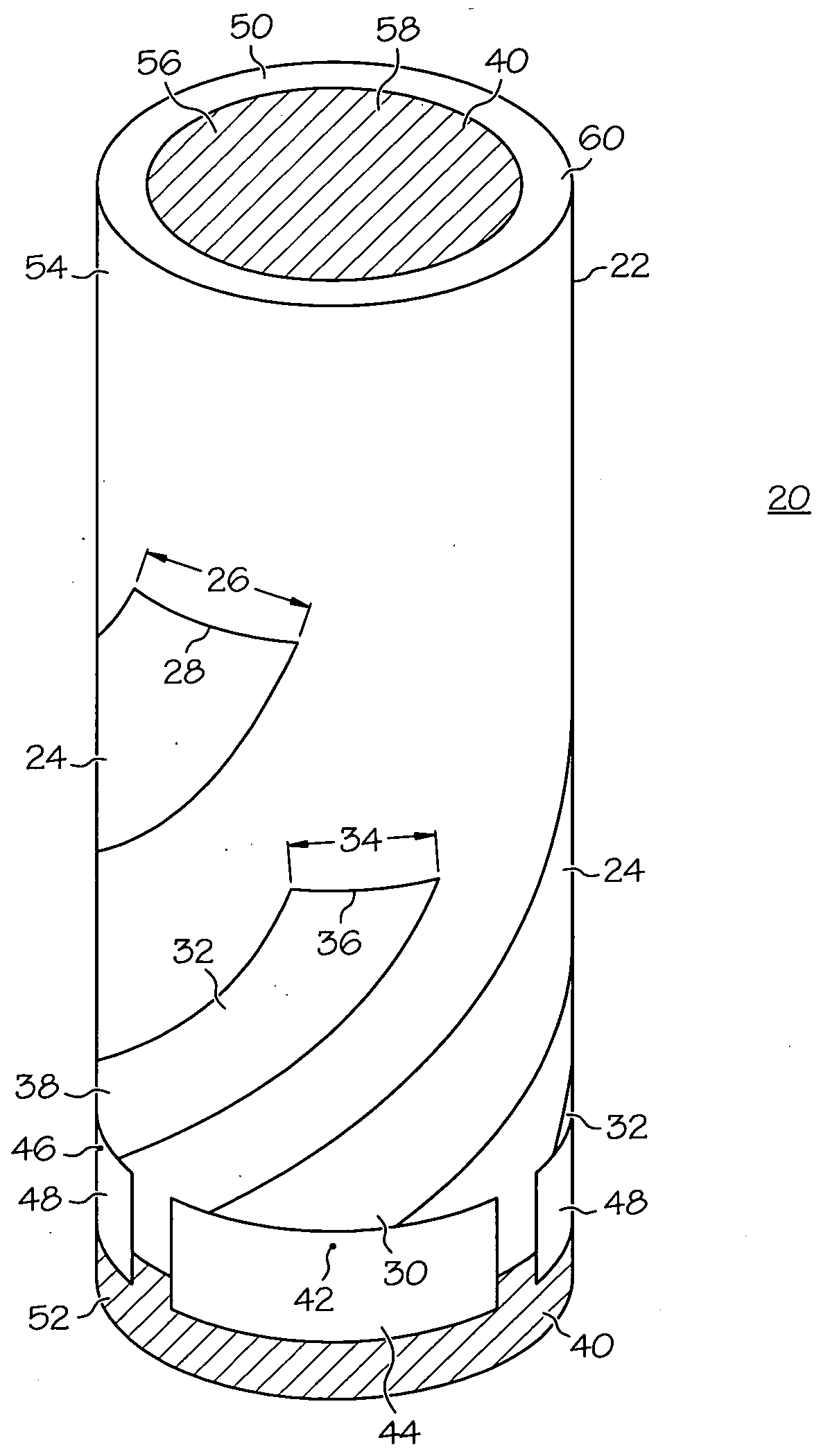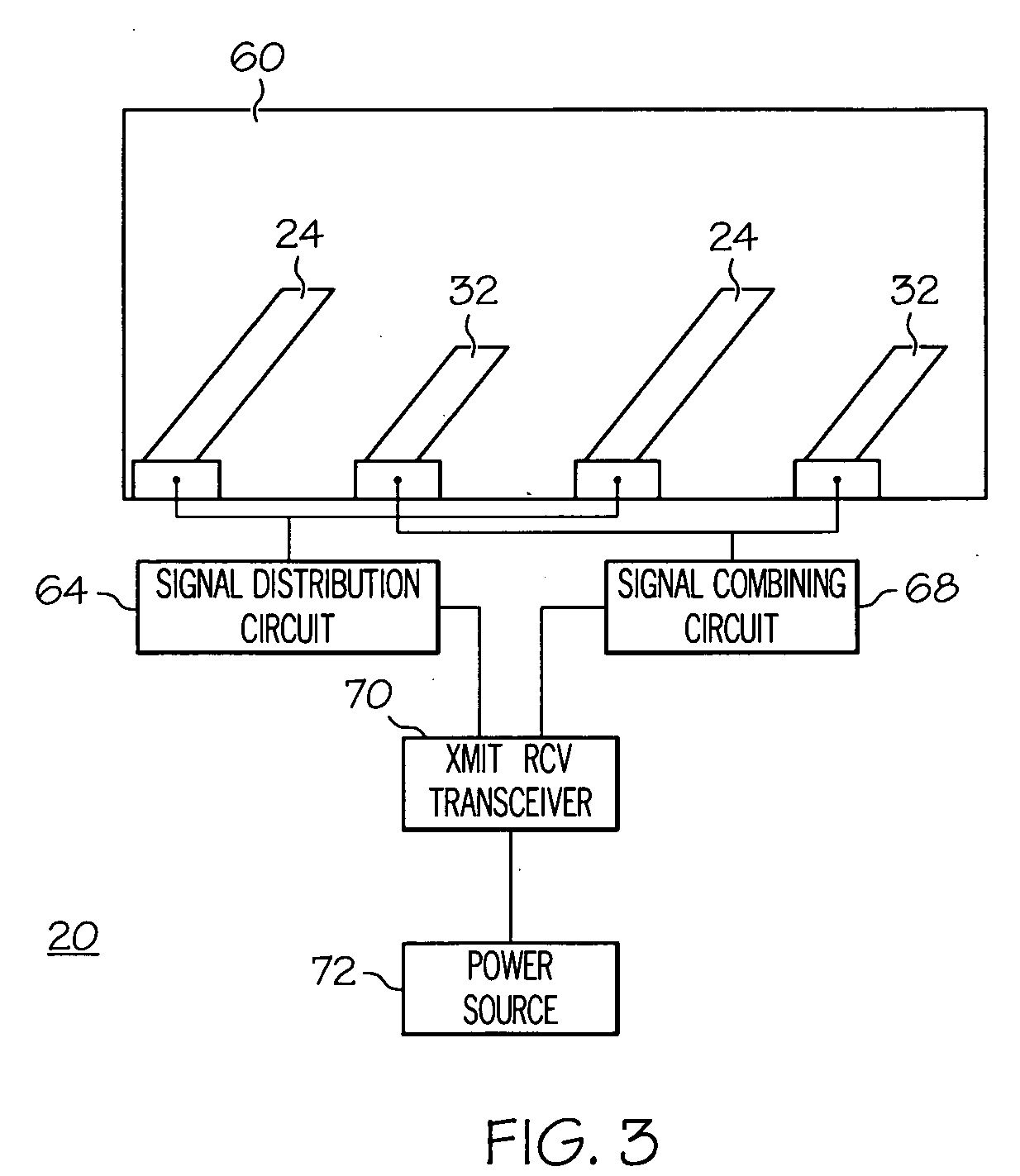Dual frequency antenna system
a dual-frequency antenna and antenna technology, applied in the direction of antenna details, non-resonant long antennas, antennas, etc., can solve the problems of high drag, physical interference with other devices on flying equipment, physical interference with other features of equipment,
- Summary
- Abstract
- Description
- Claims
- Application Information
AI Technical Summary
Problems solved by technology
Method used
Image
Examples
Embodiment Construction
[0020]FIG. 1 is a planar representation of one antenna 62 in antenna system 20 (shown in FIG. 3). First antenna 62 includes a set of radiating conductors 24, and a signal distribution circuit 64. Signal distribution circuit 64 can include a power amp, filter network, and / or any other circuitry (not shown) necessary to ensure that first antenna 62 can communicate to any station. In one embodiment, first antenna 62 is a bifilar antenna, and signal distribution circuit 64 includes passive RF devices to split a signal with equal power division and 180° phase relationship between the set of radiating conductors 24. Radiating conductors 24 are made of a conductive material and each conductor 24 has a length 74, a width 26 (shown in FIG. 4), an open end 28, a shorted end 29 and a feed end 30. In one embodiment, radiating conductors 24 are made from conductive material printed on a dielectric microstrip substrate 60. In another embodiment, the conductive material is simply attached to the d...
PUM
 Login to view more
Login to view more Abstract
Description
Claims
Application Information
 Login to view more
Login to view more - R&D Engineer
- R&D Manager
- IP Professional
- Industry Leading Data Capabilities
- Powerful AI technology
- Patent DNA Extraction
Browse by: Latest US Patents, China's latest patents, Technical Efficacy Thesaurus, Application Domain, Technology Topic.
© 2024 PatSnap. All rights reserved.Legal|Privacy policy|Modern Slavery Act Transparency Statement|Sitemap



